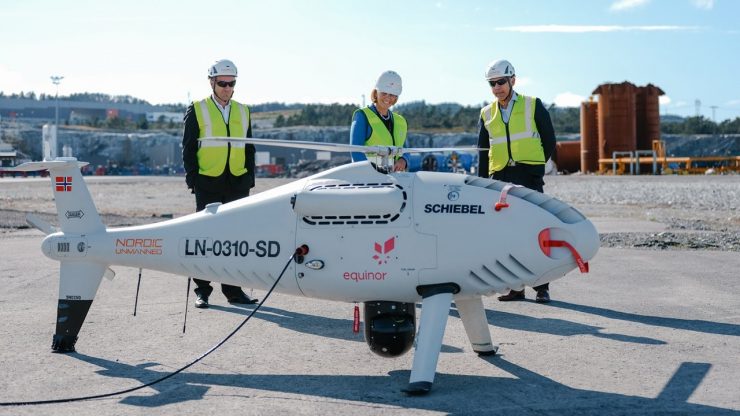Drone operator Nordic Unmanned completed a beyond line of sight (BVLOS) drone delivery spanning about 80 km to the Troll offshore field in a collaboration involving offshore company Equinor, Avinor Air Navigation Services, the Civil Aviation Authority and Norwegian Communications Authority. The flight took about an hour at an altitude of approximately 5000 feet using a Camcopter s-100 model, manufactured by Schiebel to deliver a 3D-printed part for the lifeboat system from the Mongstad base to the Troll A platform in the North Sea. The drone is more than four metres long and weighs in excess of 100 kilograms. It has a cruising speed of more than 150 km/h and it can carry cargo weighing up to 50 kg.
Arne Sigve Nylund, Equinor’s executive vice president for Development and Production Norway, said: “Drones could reinforce safety, boost production efficiency and contribute to lower CO2 emissions from Norwegian oil and gas. Drones will also play a role as we shape new energy solutions on the Norwegian shelf.”
Alena Korbovà Pedersen, Equinor Head of Logistics Solutiions added: “Over the longer term, we expect to see new infrastructure for logistics and support operations, which can reinforce what we already have within vessels and helicopters. If we are to develop the logistics solutions of the future on the Norwegian shelf, where drones could play an important role, we must cooperate across all of the industry’s players; operating companies, suppliers, the authorities and the trade union and safety interests.”
According to a press release issued by Equinor, in addition to conducting logistics operations, airborne drones can also be used for inspections and observations of the technical condition of our offshore installations and onshore facilities. They have extremely advanced camera equipment and can be used in search and rescue operations, for example to locate people who have fallen into the sea, or for early detection of pollution on the sea. These abilities were also tested during yesterday’s flight.
Drones will also play a role in new energy solutions on the NCS. Drones can inspect wind turbines, deploy equipment to be used by personnel performing maintenance and repairs, and they can deliver critical parts, fast. Using drones will also enable us to avoid some vessel lifts that can be both more costly and leave a greater environmental footprint.
The fact that we chose a 3D printed part for our first drone transport offshore was a very natural choice. 3D printing is another rapidly growing technology that will transform the way we work. The part we transported was a diesel nozzle holder – a critical component in the lifeboats on Troll A.
(Image: Ole Jørgen Bratland / Equinor ASA)
For more information visit:




